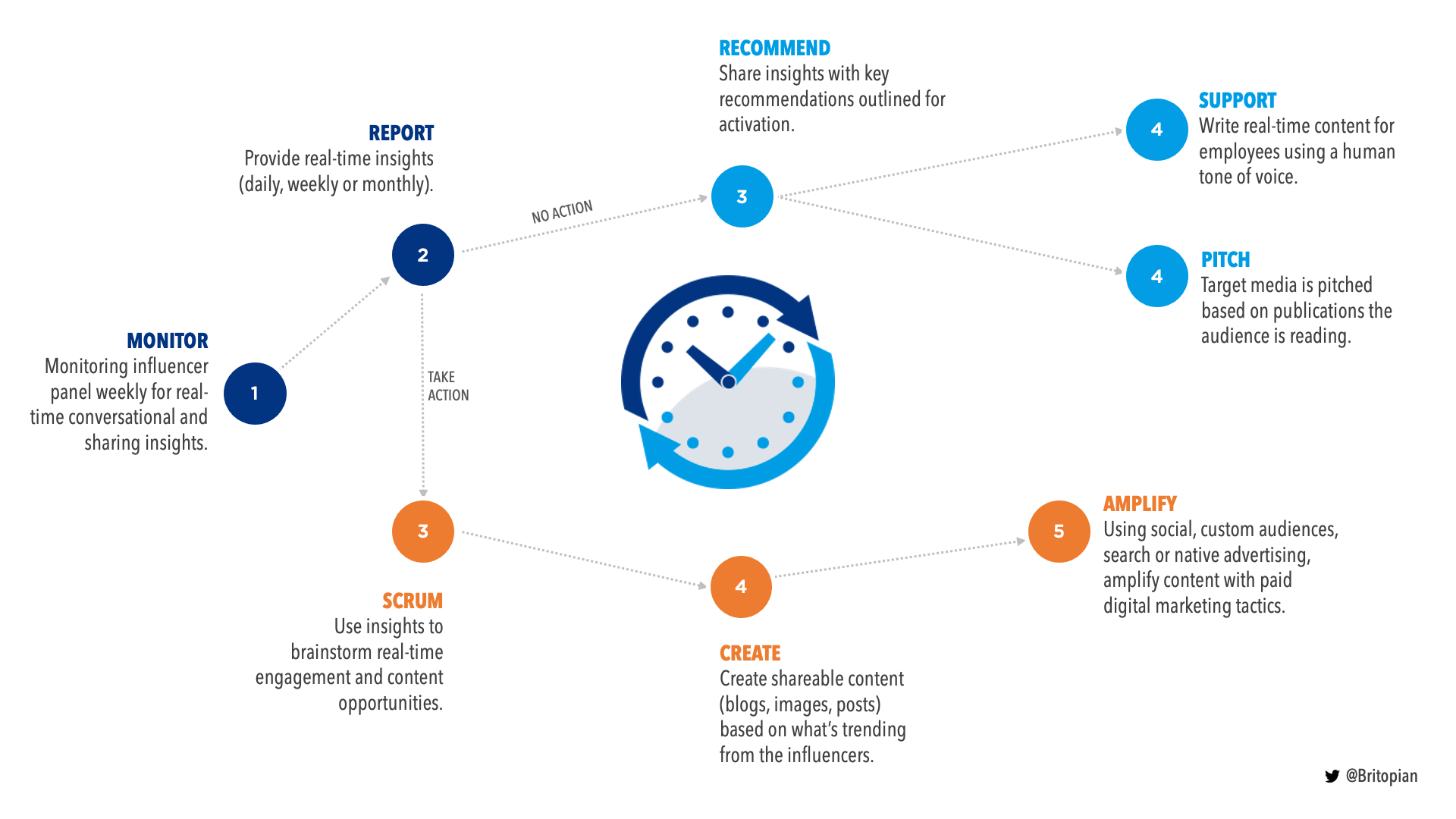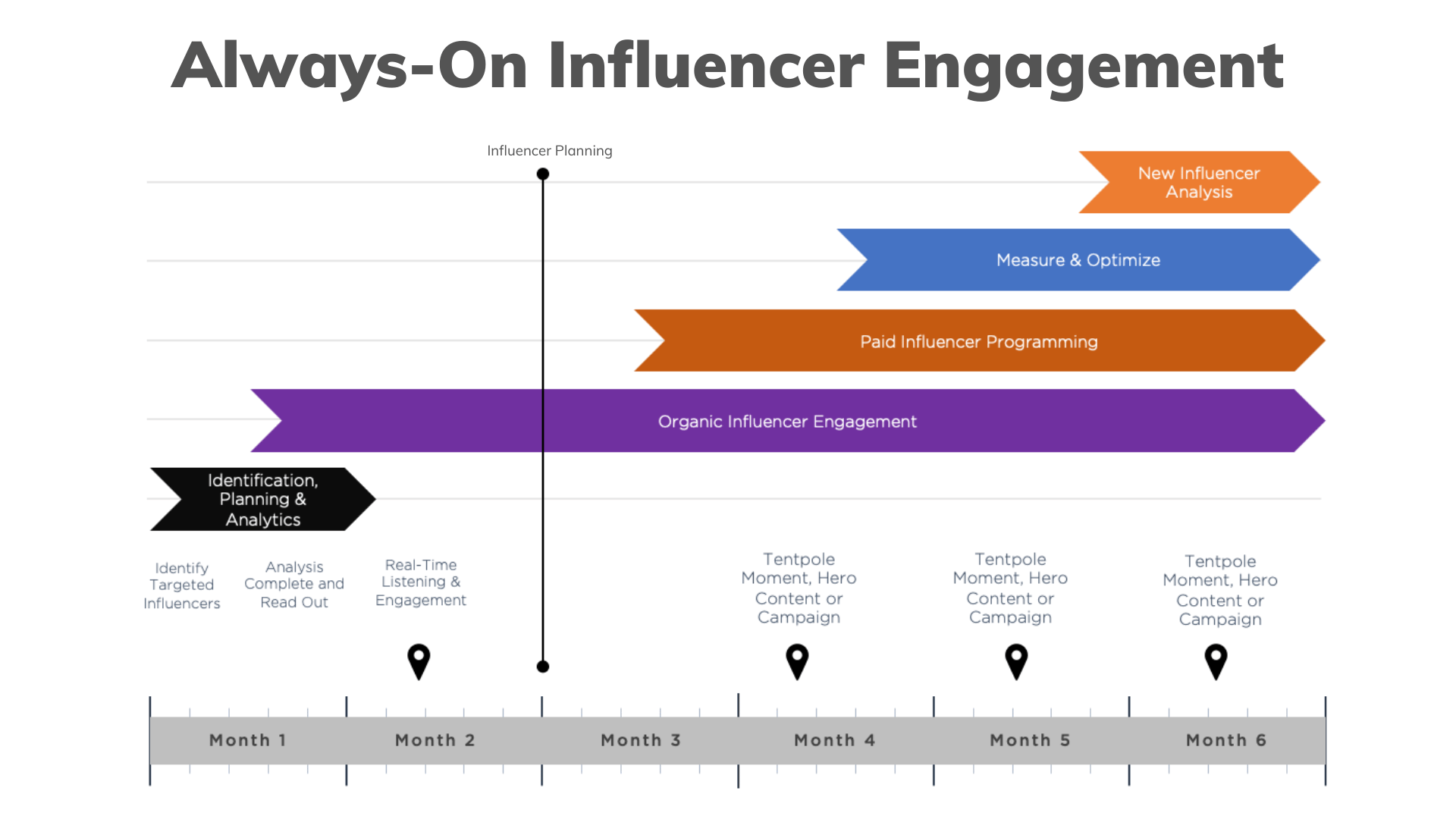An organic influencer engagement strategy will help you stay relevant, create more impactful content, and reach audiences you couldn’t reach on your own.
Why this matters:
Authentic influencer engagement matters because it is crucial in building consumer trust and amplifying your brand’s message to new audiences.
By the numbers:
- 63% of consumers trust influencer opinions more than brand messages (Nielsen)
- Influencer marketing delivers 11x higher ROI than traditional digital marketing (Inc.)
- 90% of consumers say authenticity is important when deciding which brands to support (Stackla)
Before we get into the specifics of an organic influencer engagement strategy, let me talk about what it isn’t.
An organic influencer marketing strategy does not involve paying influencers to collaborate for a campaign. It’s not paying influencers to use their content. It has nothing to do with sending influencer products in return for a social media post.
Still, many people think that organic influencer engagement involves spending massive amounts of money paying influencers for collaboration. Unfortunately, this is usually the case for consumer brands because influencers in this space won’t do anything for free.
Organic influencer engagement isn’t going to Twitter once a week and liking, commenting, and retweeting a few journalists or B2B creators. That’s not bad, but my 10-year-old niece can do that.
So now, let’s define what organic influencer engagement means and how it works.
What is Organic Influencer Engagement?
The best way to define organic influencer marketing is to compare it to organic social media.
Organic social media refers to the non-paid, naturally occurring activity on social media platforms. This includes posting content, commenting, liking, and sharing without promotion.
This is the same for organic influencer engagement. It involves identifying the right influencers, tracking their movements and conversations, and engaging with them by posting, liking, and sharing their content.
Sometimes, you may want to do influencer outreach and invite them to events and webinars or send them company news.
Why Does Organic Influencer Marketing Matter?
This approach is an efficient way to align your brand with industry influencers. Here are some key reasons why organic influencer engagement matters:
- Authenticity: Working with influencers who align with your brand values and messaging.
- Trust: By building long-term relationships with influencers, you can establish trust and credibility with your audience. Also, this approach will help you prepare for paid partnerships with influencers when you’re ready.
- Reach: You will reach new audiences when influencers share your content or engage with you on social media.
- Cost-effective: It’s not free but less expensive than paying influencers to create content for you or about you on their channels.
Organic Influencer Engagement Starts With Research
The first step is to identify the right influencers to work with. Look for influencers who align with your brand values and messaging and have a similar target audience. You can use tools like Buzzsumo or CIPIO.ai to find influencers with high engagement rates and genuine followers.
You also use ChatGPT to find relevant influencers in your industry.
If you have a decent-sized budget, you can use Onalytica or Tagger Media. These are enterprise-related influencer marketing platforms that have more robust functionality.
Once you have identified the influencers, you should segment them by influencer type–journalists, analysts, and technologists. From there, you should segment them by topic or industry. For example, if you are an AI company, you’ll want to find and engage with AI influencers and influencers aligned to general technology. You’ll also find adjacent topics and influencers and engage with them.
Now you can put together an action plan for how you will engage the influencers and in what ways.
How to Engage Influencers on Social Media Platforms
There are several ways to engage influencers on social media. I will outline a low-budget approach and an approach that is more robust, data-driven, and expensive.
I should add that it’s not free because a significant time investment is needed to do all this work. Here’s what you can do:
- Add the segmented influencers to different Twitter lists
- Frequently review the lists and try to find opportunities to engage with influencers
- As mentioned, like, comment, or share influencer content
- Create content that’s relevant, unbranded and tag the influencer
It seems basic, but it is highly effective if you don’t appear spammy.
Even if you have a large marketing budget, the above approach still works, and I highly recommend you continue to do it. But it’s much more effective if you have the technology and an agile, creative team to help you. Here is an approach you can use:
Add the influencers to a social listening panel. You can use Brandwatch, Onalytica, or another social listening platform you can access. The benefit of doing it this way is that you can look at trending topics among groups of influencers. You can also find the articles and blog posts they share or mention.
Create alerts. You can be notified with alerts if a certain topic, brand name, or hashtag is being mentioned at a higher rate. This is helpful so you don’t have to spend hours monitoring the conversation and identifying engagement opportunities.
Activate the content engine. Once you see an opportunity to engage, you could turn on the content engine. A content engine workflow allows you to create content quickly and easily. Agile content development is needed to ensure you post timely content relevant to the influencers.

Promote with paid media. Always use paid media when promoting content where influencers are featured. If you don’t, the content will get lost in the noise, and no one will see it. Plus, most influencers will appreciate the visibility.
Advanced influencer engagement strategies would include more analysis of the topics and trends the influencers are discussing over time. You can also use text analysis to uncover the hidden narratives and topics driving demand amongst this group. This is a great jumping-off point to capitalize on the trends before your competitors do.
An organic influencer engagement strategy is a process that takes time to implement but is worth the effort. By using data and analytics to identify relevant influencers and then creating content that positions your brand at the center of relevant conversations,
Replacing Organic Social with Influencer Engagement
I have never been a fan of organic social media. Mainly because most of the content is self-serving, boring, and drives little to no engagement. There is only so much you can do by posting a headshot of your executive after he’s quoted in the New York Times. I believe engaging with influencers instead of organic social is the right approach
Of course, I say that lightly. You’re still going to have to post content that won’t ever perform, but the majority of it should be real-time and focused on what influencers are talking about. It’s a lot easier said than done and would require a paradigm shift among the marketing leaders in your company.
Below is an example.
You should notice that the creative asset isn’t branded, and more than one influencer is tagged in the content. In the post copy, the tweet highlights a study from Mckinsey (also linked), and a data point is added for context. Also, the tweet asks the question, “Are you also seeing this trend?” and six influencers are tagged. The video/graphic was viewed 1.6K times with decent engagement.
The Always-On Influencer Engagement Model
As previously stated, organic influencer engagement should always be turned on, especially if you have staffing resources and a budget.
Notice in the chart below the timeline of how to deploy your influencer marketing strategy:
- Month 1: This is when you will facilitate your analysis and identify the target influencers to be included in your campaign or program.
- Month 2: This is when you’re always on organic influencer marketing program will start. Notice in the timeline it will continue throughout the year.
- Month 3: This is when your paid influencer program will kick off. Also, notice at the very bottom the tentpole moments. These represent different moments when you might want to partner with paid influencers. It could be a customer event, industry event, product launch, or marketing campaign.
- Month 4: You’ll always want to measure your organic influencer engagement program so you can start at month two or beyond. In any case, you will measure your paid partnerships depending on when they happen.
- Month 5: This is when you will reevaluate your influencer program and continue or start researching new influencers.

Use this timeline as a resource to think about how your organic influencer engagement program will align with larger paid influencer partnerships. It’s all connected to your B2B social media marketing strategy.
Related Content
